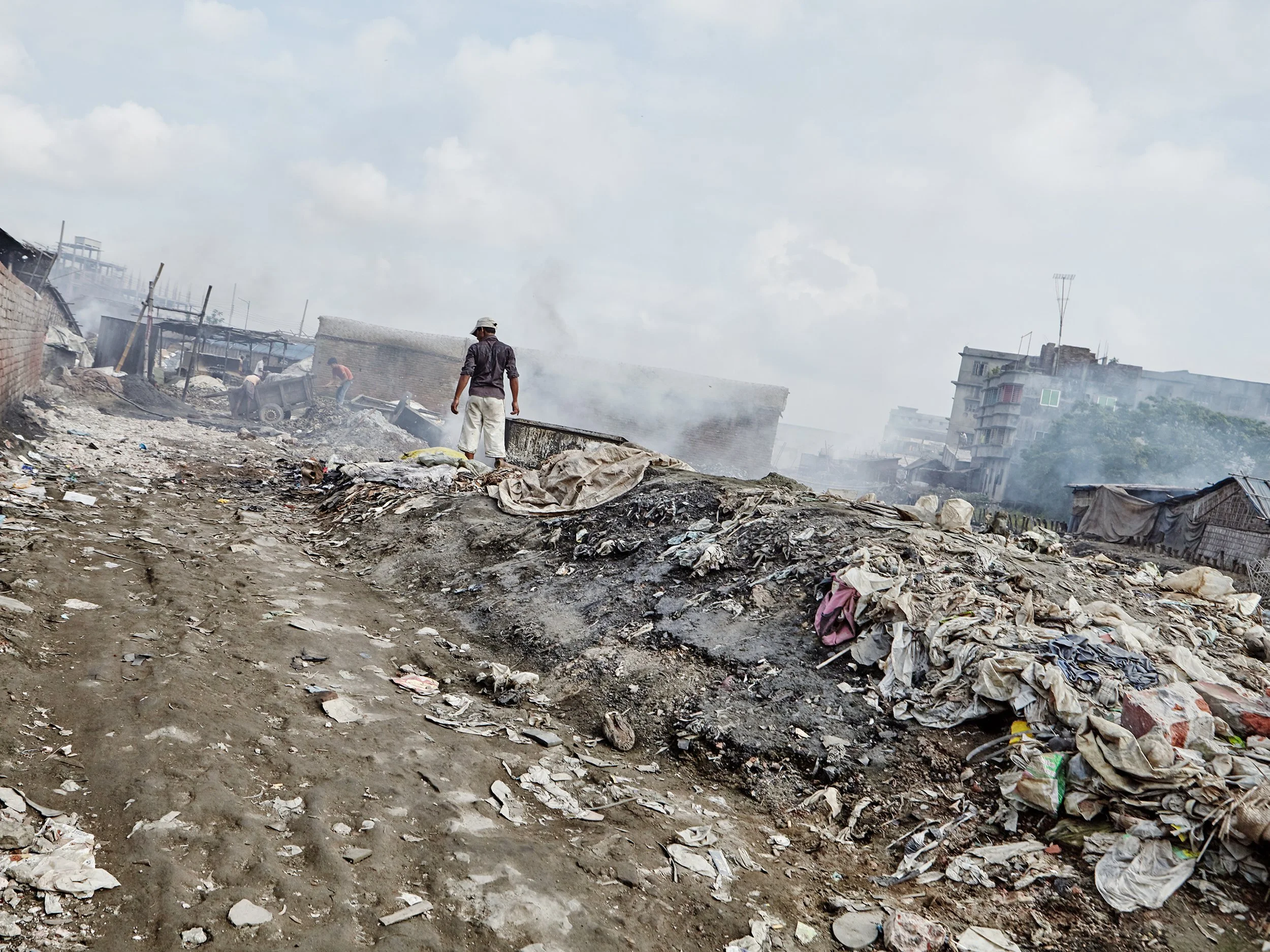Dhaka days
Dhaka, the capital of Bangladesh, is one of the most densely populated cities in the world and serves as the country's economic, political, and cultural hub. Every year, thousands of people migrate to Dhaka from rural areas due to poverty, climate change, and natural disasters. Many of these migrants end up in overcrowded slums with poor sanitation, unsafe housing, and limited access to clean water and healthcare. The city's rapid urbanization, unregulated industrial growth, and inadequate waste management have led to severe environmental challenges. Dhaka consistently ranks among the most polluted cities in the world, suffering from extreme air, water, and noise pollution. The Buriganga River, which runs through the city and plays a key role in trade and transportation, is heavily contaminated by untreated industrial waste, sewage, and plastic. One of the biggest contributors to pollution in Dhaka is the leather industry, a vital sector of Bangladesh’s economy. Previously concentrated in Hazaribag District, one of the most polluted areas of the city, the tanneries were relocated to the Savar Tannery Industrial Estate in an effort to reduce environmental damage. However, many factories still lack proper waste treatment facilities, releasing toxic chemicals into the air, soil, and water.
Despite these challenges, Dhaka continues to attract rural migrants faster than any other city in the country. Its role as a major economic center, offering employment opportunities in manufacturing, trade, and the growing technology sector, makes it a magnet for those seeking a better future, even amid its pressing infrastructural and environmental struggles.











